#Art Deco Dublin
Explore tagged Tumblr posts
Text
NOT NAMED AFTER A PRINCESS BUT AFTER TWO PRINCES -229573-1
Princes Street North, a historic gem off O'Connell Street, offers a fascinating blend of past and present for locals and visitors alike.
PRINCES STREET AS IT IS IN 2024 It should be noted that I have included, in this series of photographs, images of a narrow lane that connects North Princes Street to Middle Abbey Street as well as the GPO Arcade. The laneway is named William’s Lane and while many accounts claim that it is no longer shown on maps I checked Google Maps and it is identified. And while no one appears to know why it…
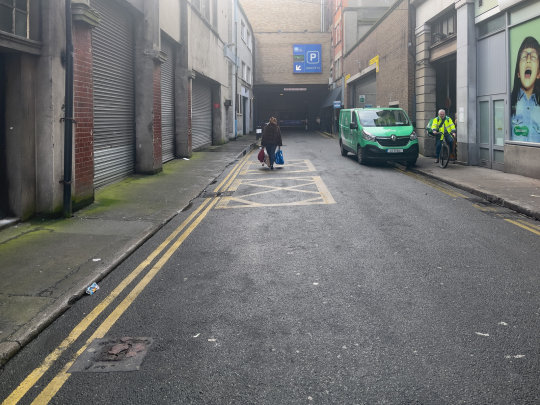
View On WordPress
#1916 rising#Apple#Art Deco Dublin#Dublin Architecture#Fotonique#GPO Arcade#History of O&039;Connell Street#Infomatique#iP{hone 12 Pro Max#Ireland#March 2024#Middle Abbey Street#North Princes Street#Princes Street Dublin#Streets Of Dublin#William Murphy#William&039;s Lane Dublin
0 notes
Text
Harry Clarke — Illustration for Tales of Mystery and Imagination by Edgar Allan Poe, ca. 1923.

Henry Patrick Clarke RHA (1889-1931) was an Irish stained-glass artist and book illustrator. Born in Dublin, he was a leading figure in the Irish Arts and Crafts Movement.
His work was influenced by both the Art Nouveau and Art Deco movements. His stained glass was particularly informed by the French Symbolist movement.
#Henry Patrick Clarke#edgar allan poe#painting#symbolism#artwork#art#irish history#irish#ireland#art movements#photo#book illustration
8 notes
·
View notes
Text

Irish chef Richard Corrigan's classic Christmas menu
The legendary chef explains how to make the perfect roastie, why turkey still triumphs over beef and the unusual ingredient in his Christmas pudding.
It's only 16:00 on a freezing autumn afternoon in central London but the daylight outside has already started to fade. As chef Richard Corrigan descends a staircase into the elegant Art Deco bar of his Mayfair restaurant Bentley's Oyster Bar & Grill, however, he brings with him a blast of energy and exuberance to blow away any gloom brought on by the darkness outside.
The larger-than-life character roars with laughter and tells riotous stories that underline his reputation as a bon vivant who has pretty much seen and done it all in the world of food.
Corrigan is a legendary figure in London's dining landscape, and 2024 marks 30 years since he first won a Michelin star and 46 since he started working as a trainee chef in his childhood home of County Meath, just north of Dublin.
Today, in addition to Bentley's, he runs the restaurants Corrigan's Mayfair, Daffodil Mulligan, Gibney's London, The Portrait Restaurant (atop The National Portrait Gallery in London's Trafalgar Square) and Virginia Park Lodge in Ireland's County Cavan. He has published two books and made countless TV appearances – including winning BBC's the Great British Menu no fewer than three times and serving as a judge on the show. He has also cooked for guests including Her Majesty Queen Read more...
0 notes
Text
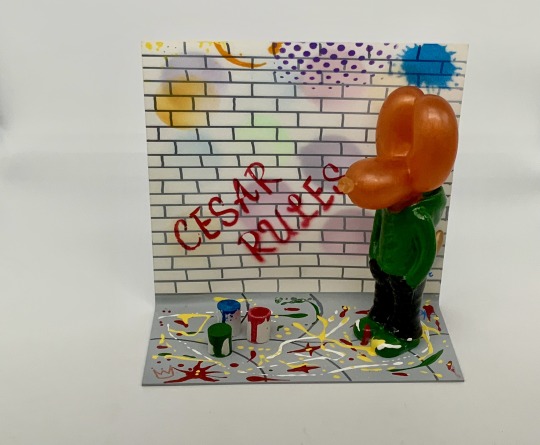
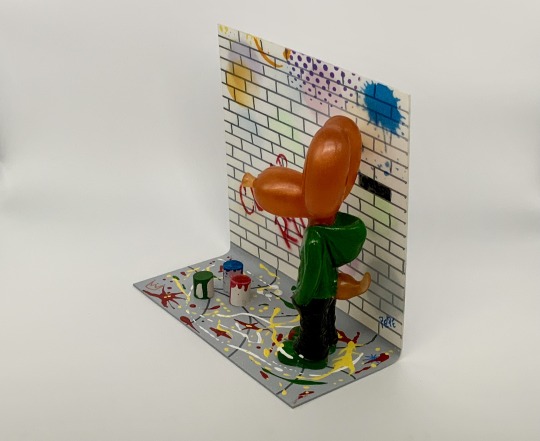

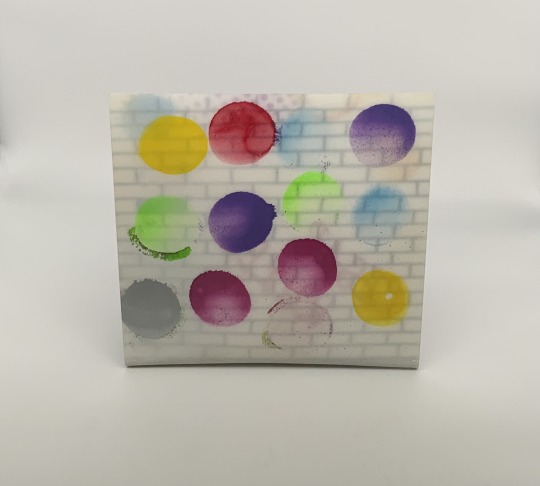
The graffiti kid Cesar Rules .. Pop art sculpture #resin #artists on tumblr #koons #balloondog #resin #resin art
#irishart
#Belfast #sculpture #dublingalleries #newryandmourne #art #Belfastgallery
#popart #streetart #comptempary #irishdesign #orginal #resin #acrylic #painting #dublin #interiordesign #pepe22 #artoftheday #artofinstagram #deco
1 note
·
View note
Text
Artist Research - Harry Clarke
Harry Clarke was an Irish artist, known for his work with stained glass, though he also had experience in illustration.
Clarke joined his father's stained glass business soon after his mother died, leaving school to help. He was formally apprenticed in 1907, whilst also taking evening classes at Dublin Metropolitan School of Art under A. E. Child, a stained glass master. He later got a scholarship for DMSA and became a full time student. Clarke would go on to win the gold medal for stained glass for a national competition by the Board of Education, becoming the first Irish student to do so.
Clarke was commissioned by George Harrap to create 40 illustrations, 16 in colour, for Hans Christen Anderson's Fairy Tales(seen below)

Clarke's unique visual style takes influence from the Art Nouveau and Art Deco movements. The Art Nouveau influence can be particularly seen through how ornamental his style is, especially with the long, organic lines.

The Geneva Window, Panel 6 (1927)
Clarke's distinct visual style carries over to his stained glass works. The above is one of 8 panels that were supposed to be for the Irish office in the International Labour Court in Geneva. The subject of these eight panels were to be from the works of fifteen modern Irish authors. The works, however, were rejected by then-president W.T. Cosgrave and not installed in Geneva.
0 notes
Text
Saint-DeMount, Sur La Mer

Most of the art that I create is produced in oils, but I also have experience creating illustration on computer using Adobe illustrator. Having lived in Sandymount, Dublin, for many years, I frequently take a walk along the promenade. Looking across the bay you cannot help but notice the iconic Poolbeg Power station with its chimneys, otherwise known as the “pigeon house.” I chose this subject as a theme for a series of digital prints produced in Adobe illustrator. To give them an interesting take I decided to pay homage to the classic French Riviera posters of the 1930s, 40s and 50s. I used photographs I took on the promenade as a basis for the prints. The text I scripted myself, with a play on words adding some fun. My choice of fonts followed the Art Deco theme. Achieving a colour palette sympathetic to the original posters and using blends helped me to capture both the light and atmosphere I wanted. Read the full article
0 notes
Text
Artist Research
23rd January 2023
I have so far been focusing my research on Gothic architecture, literature and film. I am really interested in stained glass windows and have been researching artists and more faster ways to make the 'windows', such as with resin!
Harry Clarke
Henry Patrick Clarke (17 March 1889 – 6 January 1931) was an Irish stained-glass artist and book illustrator. Born in Dublin, he was a leading figure in the Irish Arts and Crafts Movement.
His work was influenced by both the Art Nouveau and Art Deco movements. His stained glass was particularly informed by the French Symbolist movement.
His glass is distinguished by the finesse of its drawing and his use of rich colours, and an innovative integration of the window leading as part of the overall design, originally inspired by an early visit to see the stained glass of the Cathedral of Chartres. He was especially fond of deep blues. Clarke's use of heavy lines in his black-and-white book illustrations echoes his glass techniques. Clarke's stained glass work includes many religious windows, but also much secular stained glass.
I really love Harry Clarke's work and how it is just not religously themed windows he makes and how he is more illustrative and painterly with his pieces.


David Spriggs
David Spriggs (born August 24, 1978) is a Canadian-British installation artist known for his large-scale 3D ephemeral installations that layer transparent images, a technique he first began to use in 1999, to create the illusion of a three-dimensional landscape.
The artwork of David Spriggs lies in a space between the 2 and 3 dimensions. In his work he explores phenomena, space-time and movement, colour, visual systems and surveillance, the strategies and symbols of power, and the thresholds of form and perception. Spriggs is known internationally for his unique large-scale 3D ephemeral-like installations that use a technique he pioneered in 1999 layering transparent images.


I feel i may use the layering technique on sheets of acetate as i like how a collection of still images creates 'movement'. It also reminds of old school Cel Animation (although I have not chosen animation as one of my electives!), a process in which the individual slides are painted onto a sheet of celluloid.


0 notes
Photo

“The Last Hour of the Night”, frontispiece to Dublin of the Future: The New Town Plan by Harry Clarke (1922)
#harry clarke#art#illustration#art deco#art nouveau#vintage art#vintage illustration#vintage#1920s art#1920s#irish artist#illustrator#irish art#frontispiece#dublin#ireland#town planning#retro illustration#retro art#retro
667 notes
·
View notes
Text
RINGSEND LIBRARY IS AN ART DECO BUILDING DESIGNED BY ROBERT SORLEY LAWRIE
This building was one of four similar libraries built by Dublin Corporation between 1935 and 1940 in the Dublin suburbs of Phibsborough, Ringsend, Drumcondra and Inchicore.
PHOTOGRAPHED USING AN OLD CANON 5D MKIII Ringsend Public Library is an art deco style public library in Ringsend, Dublin designed by Robert Sorley Lawrie working in the city architect’s office under Horace O’Rourke. This building was one of four similar libraries built by Dublin Corporation between 1935 and 1940 in the Dublin suburbs of Phibsborough, Ringsend, Drumcondra and Inchicore.
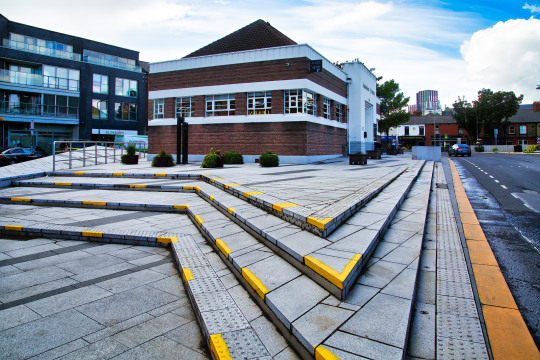
View On WordPress
#5D MKIII#art deco#building#canon#city architect&039;s office#Docklands#Dublin#Fotonique#Horace O&039;Rourke#Infomatique#Ireland#Irishtown#library#Public Building#Public Library#ringsend#Robert Sorley Lawrie#William Murphy
3 notes
·
View notes
Text

I don’t know anything about this building in Dublin, located at the NW corner of St. Stephens Green, except that it looks awfully Deco. Anyone know the background?
47 notes
·
View notes
Photo


I fell in love.
#Dublin#mine#personal#art#artsy#aesthetic#aesthetics#museum#van gogh aesthetic#art hoe#art hoe aesthetic#Art Deco#museum aesthetic#grunge#indie#boho#poetry#beautiful
66 notes
·
View notes
Photo

Bedford Row power station | Dublin
2 notes
·
View notes
Text

TALES OF MYSTERY AND IMAGINATION by Edgar Allan Poe. Illustrated by Harry Clarke.



Henry Patrick Clarke (1889- 1931) was an Irish stained-glass artist and book illustrator. Born in Dublin, he was a leading figure in the Irish Arts and Crafts Movement. His work was influenced by both the Art Nouveau and Art Deco movements. His stained glass was particularly informed by the French Symbolist movement.


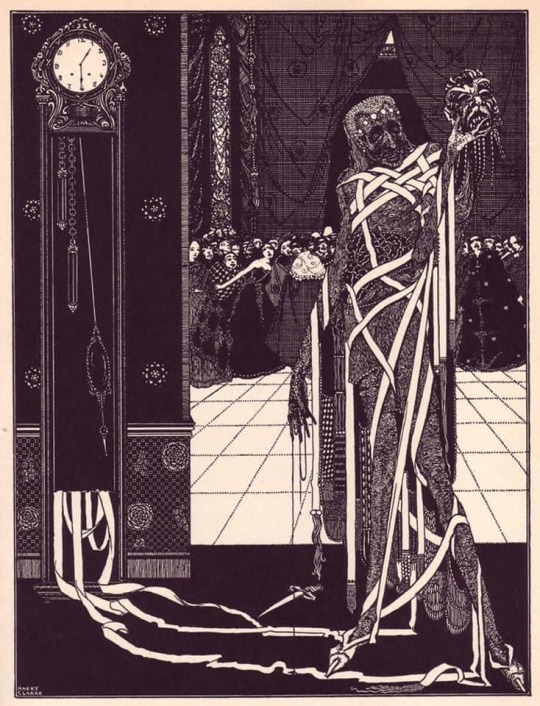



source
#books books books#book cover#books#book blog#pulp fantasy#henry clarke#illustration#beautiful books#edgar allan poe#tales of mystery and imagination
119 notes
·
View notes
Text









Harry Clarke created over 130 stained glass creations. Born in 1889 in Dublin Ireland, Clarke's works helped inspire the Art Deco movement.
13 notes
·
View notes
Photo

Cuando una puerta se cierra se habrán dos más 💛🔓💛happy Friday #door #arquitecture #love #art #modern #followme #fashion #style #yellow #beautiful #deco #lookbook #design #ootdshare #sky #mylook #fashionista #dublin #instastyle #follow #fashionpost #fashiondiaries #makeupartist #fashionblogger #picoftheday #amazing #city #colorful (en Dublin, Ireland)
#amazing#colorful#deco#city#door#modern#fashiondiaries#follow#dublin#fashionpost#love#lookbook#yellow#fashionista#beautiful#picoftheday#art#style#followme#design#fashion#ootdshare#sky#instastyle#makeupartist#fashionblogger#mylook#arquitecture
2 notes
·
View notes
Text
A different kind of mini break: imagined cities to explore from your sofa
by Serena Trowbridge, Drew Cattanach, and Paul March-Russell

KHIUS/Shutterstock
Lockdown is preventing many of us from travelling to cities we might have been longing to visit. But we can take this opportunity to explore urban landscapes that exist in other worlds. Three experts introduce cities featured in novels, poetry and video games.
Utopian London
Utopia seems like a good place to spend some time just now. William Morris’ novel News from Nowhere (1890) takes Londoner William Guest, tired of the dirty city and his hard work, to a future London where the birds sing in the trees again. People are content, with rich full lives in a place where pollution, poverty and misery are forgotten. The medieval aesthetics and socialist politics of this ideal future are improbable and optimistic, but delightful and vividly portrayed.

William Morris, News From Nowhere. William Morris/Wikimedia Commons, CC BY-NC
Though Guest is later returned to the dingy present of Victorian London, he takes back hope: of a changed world where everyone’s worth is recognised and work and leisure are productive and inspiring. The novel concludes that this future may yet be realised with communal effort, so that this beautiful, ideal London “may be called a vision rather than a dream”. ST
A bustling city
City Trees, a short poem by Edna St Vincent Millay (1921), recalls us to a time when our cities were busy places, rather than the deserted streets of a locked-down world. Millay’s poem evokes a pause, a loitering under a tree, perhaps seeking shade or shelter from the rain, straining to hear the “thin and sweet” sound a tree makes. In my head this is in Paris, though it could be any city street or country lane.

Claude Monet, Boulevard des Capucines. Nelson Atkins Museum of Art, Kansas City. Wikimedia Commons, CC BY-ND
This simple poem offers a moment of stillness in a busy place, and reminds us to look up, down, around, to pay attention to the tiny sounds and sights and movements which are signs of urban nature. Millay invites us to pay attention to the quieter aspects of life which are so often lost in the day’s noisy rough-and-tumble. ST
New Crobuzon
The author China Miéville is a Londoner since childhood and cities appear in most of his fictions. The city of New Crobuzon was first introduced in his novel Perdido Street Station, published in 2000. A congested, polluted capital whose factories run on alchemy, New Crobuzon is home to a vast array of human, non-human and hybrid creatures. The majority are exploited and abused by the ruling oligarchy and its state militia.

New Crobuzon is an industrial megacity perpetually on the point of collapse. Tithi Luadthong/Shutterstock
The city, though, is perpetually on the point of collapse. The Dickensian echoes of this fantastical yet heavily industrialised landscape suggest that New Crobuzon is only a slightly distorted version of Miéville’s London. PM-R
Viriconium
In his acknowledgements to Perdido Street Station, Miéville credits the influence of M John Harrison. Harrison’s Viriconium series, published between 1971 and 1985, may be fantasy’s best kept secret. The titular city is set on a far-future Earth and salvaged from scraps of technology. In the first novel, The Pastel City (1971), it seems to be a physical location. By the first sequel, A Storm of Wings (1980), it has become – like Joyce’s Dublin – an externalisation of the protagonists’ mental state.
In the third novel, In Viriconium (1982), the city is exposed as a fiction that disguises our real world yet also seeps into it. As Harrison later remarked, Viriconium is an invitation not “to control things. Learn to love the vertigo of experience instead.” PM-R
Novigrad
The Free City of Novigrad appears in the video game Witcher 3: Wild Hunt. The games and subsequent Netflix season are based on a series of fantasy novels of the same name, by Andrzej Sapkowski. Novigrad is a bustling economic hub, with busy trade routes exporting grain to the four kingdoms of the game’s world. The busy docks, lively squares and criss-crossing canals are modelled on medieval Amsterdam, and capture a snapshot of a crowded and dirty antique European capital. You can explore the oak-beamed townhouses which line the main thoroughfares or the dank monster-infested sewers.
Novigrad is inhabited by throngs of medieval townsfolk who you can interact with: exchanging conversation or trading goods and become embroiled in arching narratives or simply gaining an insight into the everyday life of a Novigradian. The city might not be a picture-postcard European city break, but the lavish detail makes it compelling nonetheless. DC
The Vault
Fallout Shelter is a free-to-play simulation game for smartphones and tablets. It is a twisted slice of American pie set in a post-apocalyptic future. Playing the game, you are the overseer of a vault, a subterranean city that has become a haven for dwellers, who are the remnants of humanity escaping the arid nuclear wasteland above.
The vault is styled in the futuristic Raygun gothic aesthetic – bright and energetic, with art deco overtones. However, the subtle lighting, muted palette and closeted rooms compromise the optimism and unbridled futurism of the style’s 1950s Americana.
The game unfolds as you oversee the day-to-day activities of your dwellers while sending teams out into the wasteland. Here, they scavenge for raw materials and complete quests as part of an engaging multi-faceted narrative. DC

About The Authors:
Serena Trowbridge is a Reader in Victorian Literature at Birmingham City University; Drew Cattanach is a Lecturer in Computer Games Development at the University of Westminster, and Paul March-Russell is a Lecturer in Comparative Literature at the University of Kent
This article is republished from our content partners over at The Conversation under a Creative Commons license.
7 notes
·
View notes